marijuana growing
DIY Tips and Tricks for Homegrown Marijuana
Published
2 years agoon
By
admin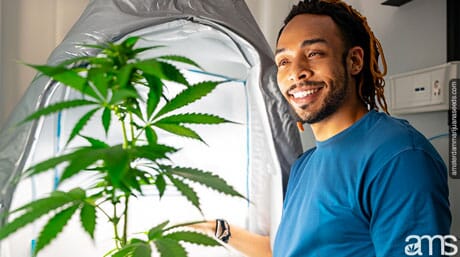
Introduction:
Growing your own marijuana has become a popular trend worldwide, offering cannabis enthusiasts a chance to cultivate their own high-quality buds right at home. Not only is it a cost-effective alternative to purchasing cannabis, but it also grants you full control over the entire cultivation process. Whether you’re a seasoned grower or a complete novice, this article will provide you with valuable DIY tips and tricks to help you embark on a successful homegrown marijuana journey. Additionally, we’ll explore the advantages of outdoor cultivation and the unique benefits it offers compared to indoor-grown cannabis.
The Appeal of Homegrown Marijuana:
The allure of homegrown marijuana lies in the ability to have complete control over the entire cultivation process, from seed to harvest. When you grow your own weed, you can choose the strains that align with your preferences, ensuring a diverse and personalized selection in your stash. Whether you’re seeking a strain with specific therapeutic properties or one that delivers a particular flavor profile, the possibilities are endless when you take the cultivation into your own hands.
Moreover, growing marijuana at home offers a cost-effective alternative to purchasing cannabis from dispensaries or dealers. While the initial investment in equipment and supplies is required, it quickly pays off as you start to harvest your own high-quality buds. Not only will you save money in the long run, but you’ll also have the satisfaction of knowing exactly how your plants were cultivated, free from any harmful pesticides or chemicals.

For both seasoned growers and beginners, the art of homegrown marijuana provides a sense of fulfillment and connection to the plant. Nurturing a cannabis plant from seedling to maturity allows you to develop a deep understanding of its growth patterns, nutrient requirements, and environmental needs. This firsthand knowledge translates into a greater appreciation for the plant’s complexities and a deeper connection to the final product.
By growing your own marijuana, you gain the freedom to experiment with different cultivation techniques, such as soil or hydroponics, and explore innovative methods like low-stress training or screen of green (SCROG). This hands-on approach empowers you to fine-tune the growing conditions, tailoring them to the specific needs of each strain and maximizing their potential for robust growth, potency, and flavor.
Getting Started with Indoor Cultivation:
When it comes to indoor cultivation, creating an optimal growing environment is key to the success of your homegrown marijuana. By setting up a well-designed grow room, you can provide the ideal conditions for your plants to thrive. Here are some essential steps to get you started on your indoor cultivation journey:
-
Choose the right strain: Selecting the right strain is crucial for indoor cultivation success. Consider factors such as the strain’s growth characteristics, flowering time, size, and resistance to pests. Indica-dominant strains, for example, tend to be shorter and more compact, making them suitable for limited vertical space.
-
Designate a dedicated space: Identify a specific area in your home that can be dedicated to your indoor garden. It could be a spare room, a closet, or even a grow tent. Ensure that the space is well-ventilated and secure, and provides adequate room for your plants to grow. This designated area will allow you to control the growing environment more effectively.

-
Set up proper ventilation: Adequate ventilation is essential for maintaining fresh air circulation and controlling temperature and humidity levels in your grow room. Use exhaust fans to remove stale air and bring in fresh air from outside. This will help prevent issues like mold and mildew and provide your plants with the proper exchange of gases.
-
Provide suitable lighting: Since indoor plants lack natural sunlight, providing artificial lighting is crucial. LED grow lights are popular among indoor growers due to their energy efficiency and ability to provide the full light spectrum necessary for all stages of plant growth. Consider the wattage and coverage area of the lights based on the size of your grow space and the number of plants you intend to cultivate.
-
Optimize temperature and humidity: Cannabis plants thrive within specific temperature and humidity ranges. Aim for temperatures between 70-85°F (21-29°C) during the day and slightly cooler temperatures at night. Additionally, maintain relative humidity levels between 40-60% during the vegetative stage and lower it to 30-40% during flowering to prevent mold and other issues. Using a hygrometer and a thermometer will help you monitor and adjust these factors accordingly.
-
Choose the right growing medium: Selecting the appropriate growing medium is crucial for indoor cultivation. Popular options include soil, soilless mixes, and hydroponics. Each medium has its own advantages and considerations. Soil is user-friendly and forgiving, while hydroponics offers faster growth rates and increased nutrient control. Consider your experience level and preferences when choosing a growing medium.
-
Provide proper nutrients: Cannabis plants require a range of nutrients to grow and thrive. You can use pre-mixed nutrient solutions designed specifically for cannabis cultivation or create your own using organic or synthetic fertilizers. Remember to follow the recommended dosage and feeding schedule for each stage of growth to ensure your plants receive the right nutrients at the right time.
-
Implement a watering schedule: Overwatering is a common mistake among novice growers. It’s important to establish a watering schedule based on the specific needs of your plants and the growing medium you’re using. Allow the soil or growing medium to dry out slightly between waterings to avoid issues like root rot. Pay attention to your plants’ visual cues, such as drooping leaves or light pots, to determine when they need watering.

By following these steps, you can lay a solid foundation for your indoor marijuana cultivation. However, it’s important to note that successful indoor growing requires continuous monitoring, adjustment, and a commitment to learning from your plants. Each strain may have specific requirements, so adapt and fine-tune your approach as needed.
The Advantages of Outdoor Cultivation:
While indoor cultivation provides precise control over the growing environment, outdoor cultivation offers unique advantages that are worth considering. Cultivating cannabis in the great outdoors allows you to harness the power of natural elements and offers an authentic connection with nature. Here are some key advantages of growing marijuana outdoors:
-
Full spectrum of natural light: One of the most significant benefits of outdoor cultivation is access to the full spectrum of natural light provided by the sun. Natural sunlight contains a diverse range of wavelengths that contribute to the plant’s growth and development. This results in cannabis plants with a richer terpene profile, enhanced flavors, and potentially higher cannabinoid levels. The intensity and quality of natural sunlight cannot be replicated by artificial lighting indoors.
-
Cost-effective and sustainable: Outdoor cultivation is generally more cost-effective compared to indoor setups. You don’t need to invest in expensive grow lights, ventilation systems, or climate control devices. Instead, you rely on the sun, rainwater, and the nutrients present in the soil. This environmentally friendly approach minimizes energy consumption and reduces your carbon footprint.
-
Expansive growth potential: Outdoor plants have the advantage of having ample space to grow and spread their roots. This results in larger plants with the potential for higher yields. Cannabis plants grown outdoors can reach impressive sizes, especially when provided with proper care and attention. The abundant space allows the plants to develop robust root systems, which can contribute to increased nutrient uptake and overall plant health.
-
Enhanced flavors and aromas: Growing cannabis outdoors exposes the plants to a variety of environmental factors that can enhance their flavors and aromas. Factors such as soil composition, regional climate, and exposure to natural elements contribute to the unique taste profiles of outdoor-grown marijuana. Many enthusiasts appreciate the earthy, natural flavors and aromas that come from outdoor cultivation.
-
Sun-kissed experience: There is something truly special about witnessing your plants basking in the warm embrace of the sun. The connection to nature and the joy of nurturing a plant under the open sky can provide a deeply satisfying experience. Additionally, spending time outdoors and engaging in the physical act of gardening can be therapeutic and offer a sense of relaxation and mindfulness.
-
Sustainability and self-sufficiency: Growing cannabis outdoors aligns with a sustainable and self-sufficient lifestyle. By relying on natural resources and reducing your dependence on commercial suppliers, you have greater control over the quality and safety of your cannabis. Additionally, the experience of growing your own marijuana from seed to harvest provides a sense of accomplishment and self-reliance.

While outdoor cultivation offers numerous advantages, it’s important to consider potential challenges as well. Factors such as climate, pests, and local regulations may impact your outdoor grow. It’s crucial to select cannabis strains that are well-suited to your specific climate and to implement proper pest prevention measures. Additionally, familiarize yourself with local laws and regulations surrounding outdoor cultivation to ensure compliance.
Experimentation and Personalization: Unleashing Your Creativity in Homegrown Marijuana
One of the most exciting aspects of homegrown marijuana is the opportunity to experiment and personalize your cultivation techniques. When you grow your own weed, you have the freedom to explore different methods and strategies that align with your preferences and goals. Here are some avenues for unleashing your creativity in homegrown marijuana:
-
Training techniques: Cannabis plants can be trained and shaped to optimize their growth and maximize yields. Techniques like topping, pruning, and low-stress training (LST) allow you to manipulate the plant’s growth patterns, control its height, and encourage the development of multiple bud sites. Each training technique offers a unique approach to shaping your plants and can result in diverse plant structures and improved light penetration.
-
Nutrient customization: Customizing nutrient regimens allows you to fine-tune the nutrient composition based on the specific needs of your plants and your desired outcomes. You can experiment with different organic or synthetic nutrient formulas, adjust nutrient ratios during different growth stages, and incorporate additives or supplements to enhance certain characteristics like terpene production or bud density. Keeping detailed notes and observing the effects of various nutrient combinations will help you refine your approach.
-
Growing mediums and substrates: While soil is a common growing medium, there are alternative options that can add another layer of experimentation. Coco coir, perlite, vermiculite, or a mix of these can be used as soilless alternatives, offering improved drainage and aeration. Hydroponic systems, such as deep water culture (DWC) or nutrient film technique (NFT), provide precise control over nutrient delivery and can result in accelerated growth rates. Exploring different growing mediums and substrates allows you to observe how they impact plant health, growth, and flavor.
-
Genetic selection and breeding: As you gain experience and confidence, you may find yourself intrigued by the possibility of creating your own unique cannabis strains through breeding. By selecting and crossing different parent plants with desirable traits, you can unlock new combinations of flavors, aromas, and effects. While breeding requires knowledge and patience, it can be a rewarding endeavor for those passionate about genetics and innovation.
-
Organic and sustainable practices: Homegrown marijuana offers an opportunity to embrace organic and sustainable cultivation practices. You can experiment with composting, natural pest control methods, and regenerative gardening techniques. By nurturing the soil microbiome and minimizing your environmental impact, you can produce cannabis that is not only high-quality but also aligns with your values and ethics.
Remember, experimentation is key to unlocking new possibilities and expanding your knowledge as a grower. Keeping a journal to document your methods, observations, and outcomes will help you track your progress and make informed decisions in future grows.

Conclusion:
Growing your own marijuana at home, whether indoors or outdoors, is a rewarding endeavor that offers cannabis enthusiasts a unique and satisfying experience. By following the DIY tips and tricks provided in this article, you can embark on a successful cultivation journey and enjoy the fruits of your labor. Whether you choose the precise control of indoor cultivation or the natural benefits of outdoor growing, the art of homegrown marijuana allows you to customize your strains, control the growing environment, and develop a deeper connection with the plant.
Embarking on your cannabis cultivation adventure opens a world of possibilities. You’ll have the opportunity to experiment with different techniques, personalize your growing methods, and unleash your creativity as a grower. As you fine-tune your skills and knowledge, you’ll discover what works best for you and your unique growing environment.
The satisfaction derived from nurturing a cannabis plant from seed to harvest is unparalleled. From selecting the perfect strains to savoring the flavors and effects of your homegrown buds, the journey is filled with joy, learning, and a sense of accomplishment. Moreover, the cost-effectiveness and self-sufficiency that come with growing your own marijuana add to the appeal of this practice.
So, whether you’re a seasoned cultivator or a novice grower, it’s time to grab your gardening tools and embark on your own cannabis cultivation adventure today. By following the guidance provided in this article and staying curious and open-minded, you’ll unlock the secrets of growing your own weed and discover the immense satisfaction and rewards it brings.
Remember, the journey of homegrown marijuana is a continuous learning process. Embrace the challenges, adapt your techniques, and enjoy the unique experience of cultivating and consuming your very own high-quality buds.
Happy growing!
Disclaimer: This content is meant for educational purposes only. It has been compiled with research from external sources. it is not meant to substitute any medical or legal advice. Please see your local laws for the legality of cannabis use.
You may like
-


This State’s Cannabis Revenue Keeps Pouring In
-


Major Bloom: Cultivating community, creativity, and cannabis in Worcester
-
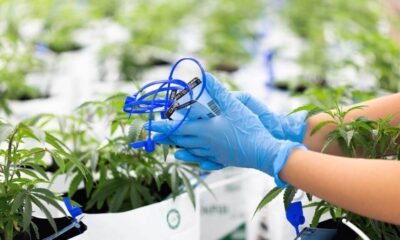

How a Colorado operator stumbled onto ‘blueprint for laundering marijuana’
-


Northern Ireland: Man charged after £425,000 worth of cannabis seized
-


Getting THC Edibles in Your Edible Arrangement?
-


Is Cannabis Legal in California Right Now?
Cannabis
Cannabis And Co2 – How To Increase Your Yield
Published
3 months agoon
December 27, 2024By
admin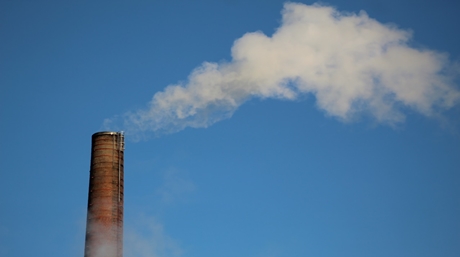
Discover Cannabis and CO2
Did you know that your plants can be harmed if they don’t get an adequate supply of CO2? Or that an excessive supply of carbon dioxide can potentially be harmful to your marijuana plants? Carbon dioxide is a crucial aspect of marijuana cultivation that can hinder or permanently halt the progress of plant growth. When it comes to supplying your plants with additional carbon dioxide, there are certain factors you need to keep in mind. In this piece “Cannabis and CO2” we will share ways to optimize CO2 levels for cannabis growth.
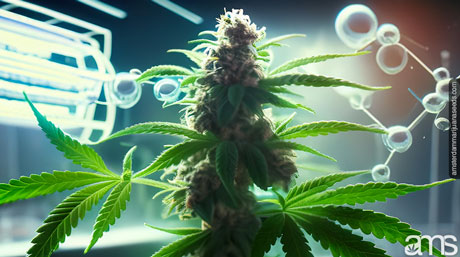
Why is carbon dioxide essential for cannabis cultivation?
It is essential to ensure that your plants receive a carbon dioxide level above 250 parts per million (ppm). Any CO2 level below this measure can pose immense risk to them. On the other hand, exposing your plants to dangerously high levels of carbon dioxide can be lethal. But why is carbon dioxide essential for cannabis cultivation? It enables plants to complete the process of photosynthesis. Photosynthesis is the conversion of carbon dioxide into energy in plants. As the name and formula imply, CO2 consists of one carbon atom and two oxygen atoms. This is significant because plants require 17 essential elements to grow and reproduce, and hydrogen, carbon, and oxygen make up 95% of a plant’s dry weight.
Many farmers suggest that adding CO2 to the cultivation room could improve yields by up to 20%. However, this guide will show you how to optimize carbon dioxide levels for better weed growth and excellent results.
How to introduce additional CO2 to your garden
There are several methods to add carbon dioxide to your garden. However, many of these methods do not guarantee controlled delivery of the desired PPM. Therefore, we recommend investing in reliable equipment to ensure proper CO2 supplementation.
CO2 generators
CO2 generators offer an effective way to improve the carbon dioxide levels in your plants. These products, resembling outdoor heaters, burn propane or natural gas to produce carbon dioxide. They also emit heat, making them suitable for larger spaces and climate-controlled enclosures.
Compressed CO2
Compressed CO2, stored in metal tanks like propane cylinders or scuba tanks, can be delivered to your plants through emitters. Unlike generating carbon dioxide on your own, compressed carbon dioxide is produced at a factory, eliminating concerns about heat generation. This makes compressed CO2 an excellent choice for small-scale growers.
What does carbon dioxide do for your cannabis plants?
Optimizing carbon dioxide levels for your plants will result in increased growth speed and higher yields. With accelerated growth, you can enjoy bountiful harvests every year, resulting in bigger and better yields without experiencing dry periods. When carbon dioxide is used properly, it increases the moisture content in your plants and enhances their resilience. This enables plants to withstand higher temperatures than they normally would without drying out quickly. As a result, your plants will thrive in hotter conditions, leading to improved growth.

Why use CO2 in cannabis cultivation?
There are two primary benefits of using CO2 in your marijuana plants: faster growth and greater yield. Additionally, plants store a certain amount of moisture and energy in their leaves, and carbon dioxide helps release that energy, allowing plants to blossom. Most cultivators agree that unlocking this stored energy can lead to a 20-30% increase in yield, along with a relative growth speed increase of at least 15%.
What do you need to know before adding CO2 to your cannabis plants?
Adding CO2 will increase the humidity of your cannabis garden, creating a more moist environment. However, higher moisture levels can also increase the risk of fungus and rot. Moreover, uncontrolled release of carbon dioxide can create a toxic environment for both your cannabis plants and yourself. A CO2 level of about 2000 ppm can harm your plants, and levels higher than that can be unsafe for animals and humans to breathe. It’s important to remember that a quantity below 250 ppm will harm your plants.
Since carbon dioxide is heavier than oxygen, it needs to rain down on your plants. Therefore, it’s necessary to regulate carbon dioxide levels to maximize its benefits without sacrificing the oxygen your plants require, and vice versa. In a nutshell, carbon dioxide supplementation will lead to bigger, improved, and higher annual yields.
Cannabis Seeds
Compare Indica Vs Sativa: Differences And Benefits Explained
Published
4 months agoon
December 11, 2024By
admin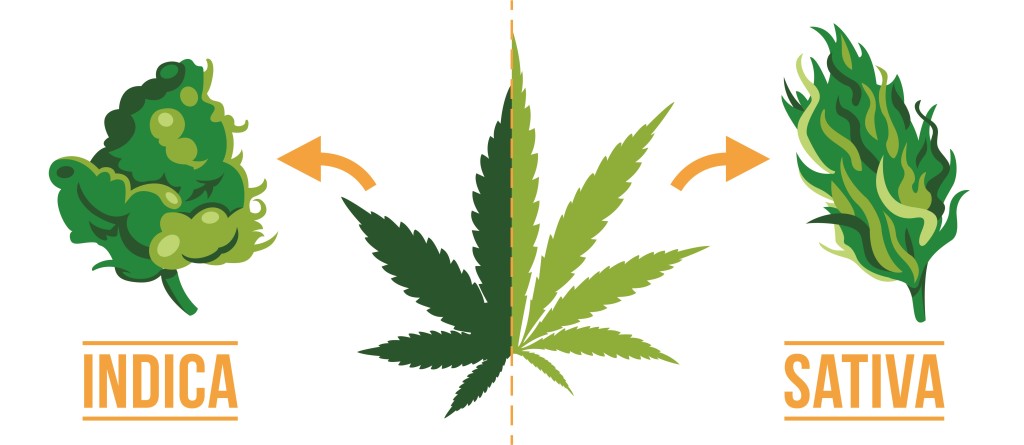
Indica vs Sativa
Who would have thought that in marijuana there are different types of plants with completely different effects and benefits? The origin, the climate, the effects, and the physical characteristics are crucial in order, to differentiate the type of plant that you are going to use either in the clinical, pharmaceutical, or recreational field, as well as to know between Cannabis Sativa and Cannabis Indica in order, to be able to make the best selection of seeds according to your needs.

Marijuana is a well-known plant for its mind and body effects and it’s split into two main types: Sativa and Indica. Even though they come from the same family and have similar ingredients, they’re different in how they look and what they do when you use them. Let’s break it down simply:
What the plants look like:
Indica: This plant is short and looks like a bush with wide leaves. It grows well in cooler and mountainous areas.
Sativa: This one is tall and thin, with skinny, pointed leaves, kind of like a young pine tree. It likes hot and humid places.
How they make you feel:
Indica: It chills you out and can make you sleepy, like when you’re getting cozy in bed after a long day.
Sativa: It energizes you and wakes up your mind, great for when you need to do things that require imagination or when you’re hanging out with friends.
To put it simply: if you want to relax, go for Indica. If you want to be more alert and active, go for sativa. We’ll explain more about this soon so you can better understand how each one affects people differently.
The two subspecies of marijuana represent different adaptations to different climates. Sativa originates from the jungles of equatorial regions such as Thailand, Cambodia, Jamaica, Colombia, and Mexico, places that enjoy long hours of sunshine and constant light throughout the year. The Indica variety, on the other hand, comes from the Hindu Kush region, a vast mountain range of more than 800 kilometers that stretches from Afghanistan to China and is characterized by a very cold climate.
Climatic and physical characteristics
Cannabis Sativa is known for its ability to adapt to the heat of tropical climates, being resistant to low temperatures and showing an effective ability to prevent the growth of fungi commonly associated with humidity. Indicas, on the other hand, originate from mountainous climates, which enables them to withstand climatic challenges such as wind, rain, and frost.
Morphology and appearance:
Morphology of Cannabis Sativa
Cannabis Sativa plants, are distinguished by their unique morphology and appearance, which tend to be taller and more slender, with long, thin leaves, differentiating them from other marijuana species such as Indica and Ruderalis. The following points highlight the main morphological and appearance characteristics of Sativa:
- Height and Structure: Cannabis sativa plants are typically tall and slender, with some varieties reaching heights of up to 20 feet (about 6 meters) under optimal conditions. They have a more open structure compared to the bushier Cannabis indica, allowing for greater light penetration throughout the plant.
- Leaves: The leaves of Cannabis sativa are characteristically long and narrow with a light green color. They possess serrated edges and are composed of slender leaflets that are spread far apart. The number of leaflets can vary, usually between 5 to 13 per leaf.
- Branching: Sativa plants have less dense branching compared to their indica counterparts, with branches extending outward and upward, giving the plant an airy appearance. This less compact structure is beneficial for air circulation and can help in reducing the risk of mold and fungal diseases in humid environments.
- Flowers (Buds): The flowers of Cannabis sativa are elongated and less dense than those of indica plants. They tend to be more “fluffy” or airy and can appear on the plant as spaced, apart clusters. The flowering period for sativa strains is generally longer, often taking between 10 to 16 weeks to fully mature.
- Trichomes: While both sativa and indica plants produce trichomes (the resinous glands containing cannabinoids), the concentration and distribution can vary. Sativa plants typically have a high concentration of trichomes on the flowers and surrounding foliage, contributing to their potent therapeutic and psychoactive properties.
- Root System: Cannabis sativa plants develop a deep taproot system, which enables them to access water from deeper soil layers. This characteristic is beneficial for plants growing in arid conditions, allowing them to thrive where other plants might not.
- Growth Pattern and Maturation: Sativa strains usually have a longer vegetative growth phase, which contributes to their tall stature. Their extended flowering time requires patience but can result in high yields of marijuana flowers.
Cannabis sativa strains are often associated with a cerebral, uplifting high, attributed to their higher concentration of THC in comparison to CBD. This makes them particularly popular for daytime use. The distinct morphology and appearance of sativa not only contribute to its cultivation requirements but also influence its effects and applications, making it a fav
Morphology of Cannabis Indica
Cannabis Indica plants have distinctive morphological traits, shorter and more compact appearance, with wider and denser leaves, traits that differentiate from Sativa and Ruderalis. The main characteristics of Indica are described below:
- Height and Structure: Cannabis indica plants are generally shorter and bushier than their sativa counterparts, typically reaching heights of 2 to 4 feet (about 0.6 to 1.2 meters). They have a compact, dense structure, which makes them well-suited for indoor cultivation.
- Leaves: The leaves of Cannabis indica are broad and dark green, with fewer but wider leaflets compared to sativa plants. Indica leaves often have between 7 to 9 leaflets, which are closer together, giving the leaf a fuller appearance.
- Branching: Indica plants have dense branching, with closer internodal spaces. This compact growth habit results in a bushy appearance and contributes to their ability to produce more buds in a smaller space.
- Flowers (Buds): The buds of Cannabis indica plants are typically dense, thick, and bulky, clustering around the plant’s nodes. Due to the plant’s compact nature, these buds are often heavier and more resinous than those of sativa strains, leading to higher yields per square foot in controlled environments.
- Trichomes: Cannabis indica plants are known for their abundant trichome production, which covers the buds and surrounding foliage in a thick layer of crystalline resin. This resin is rich in cannabinoids like THC and CBD, making indica strains highly potent.
- Root System: Indica plants have a more spread-out root system compared to the deep taproot of sativa plants. This characteristic makes them more adaptable to various growing mediums and efficient in nutrient uptake from the soil.
- Growth Pattern and Maturation: Cannabis indica strains have a shorter vegetative growth phase and a faster flowering cycle than sativa strains, often maturing in 6 to 8 weeks. This quick turnaround makes them attractive to cultivators looking for a fast crop.
- Effects: Indica strains are traditionally associated with a sedative, body-centric effect, often referred to as a “body high.” This makes them popular for evening use, providing relaxation and aiding in sleep.
The morphology and appearance of Cannabis indica are not just significant for identification; they also have practical implications for cultivation and use. The compact, dense growth of indica plants makes them particularly suited for indoor or space-constrained environments. Their potent, resinous buds are favored for their strong therapeutic effects, offering relief from pain, anxiety, insomnia, and more.
Chemical and Psychoactive Composition
Both subspecies contain a variety of chemical compounds, but the proportions of these compounds can vary.
Cannabis Sativa: Sativas tend to have higher levels of tetrahydrocannabinol (THC), the compound responsible for the psychoactive effects. They may also contain significant amounts of cannabidiol (CBD), which has health properties, but in lower proportions than THC.
Cannabis Indica: Indicas generally have slightly lower THC levels than Sativas, but can still be potent. They tend to have a more balanced ratio of THC and CBD, which can result in a more relaxing and sedative effect.
When it comes to psychoactive effects, it is important to remember that although both Sativa and Indica contain THC, the effects and reactions vary greatly depending on the type of plant.
So which strain is right for me? Amsterdam Marijuana Seeds can tell you:
Sativa is known for its properties that induce a state of euphoria and greater sociability compared to the Indica variety. This sub-species enhances perception, intensifying the appreciation of colors and sounds while stimulating creativity and thinking. Sativa is used to relieve stress, anxiety, depression, nausea, migraines, and as an appetite stimulant, among other wellness benefits.
On the other hand, Indica, known for its relaxing and sedative properties, is highly effective in the treatment of insomnia and a variety of conditions. It is widely used to alleviate neuromuscular disorders such as tremors and, spasms, and to combat chronic pain. It is also a valuable option for reducing anxiety and stress and stimulating appetite in patients who need it.
Alternative uses
Cannabis Sativa: Sativas are often used to treat depression, anxiety and to improve mood. They can also be useful in treating attention deficit disorder and stimulating appetite.
Cannabis Indica: Indicas are preferred for the treatment of chronic pain, insomnia, anxiety and to relax tense muscles. They are also commonly used to treat gastrointestinal disorders.
It is important to note that due to hybridisation and genetic variability of marijuana strains, classification as sativa or indica is not always accurate. In addition, individual experience with these subspecies may vary between individuals and specific strains.
Sativa and Indica are two subspecies with marked differences in morphology, chemical composition, psychoactive effects, and alternative uses. The choice between one or the other depends on the personal preferences and therapeutic needs of each individual.
Cannabis Seeds
Marijuana Seed Varieties For Cultivation
Published
4 months agoon
December 8, 2024By
admin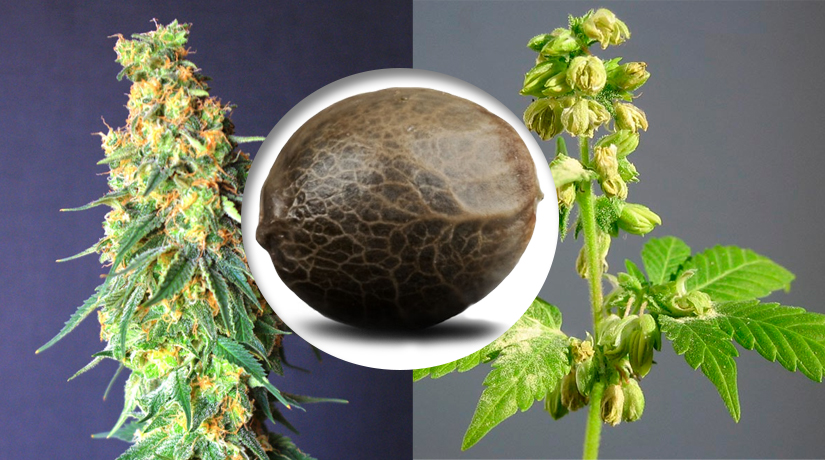
CBD Seeds
CBD marijuana seeds share characteristics with feminized, regular, or autoflowering varieties, but are distinguished by their higher CBD content compared to conventional varieties. Additionally, in many cases, the aim is to minimize the THC level so that they can be used for medicinal purposes.
However, these seeds never contain the adequate concentration of THC for use in legal CBD product production, which currently must be below 0.2%. For this purpose, hemp seeds are used. Despite this, CBD marijuana seed varieties still offer more relaxing and stress-relieving effects than other varieties.
Hemp Seeds
Unlike CBD seeds, hemp seeds always contain THC levels below 0.2%, ensuring a predominance of CBD. Also known as industrial hemp, this variety is used for CBD extraction and the production of therapeutic products. However, the CBD levels obtained from hemp never reach those achieved with CBD seeds.
Hemp seeds are not only used for obtaining cannabidiol but also for extracting strong fibers used in various industries, such as textile, paper, insulation, rope manufacturing, fuel, paints, cosmetics, among others. Additionally, hemp seeds are edible and can be consumed as oil, whole, raw, toasted, or ground into flour.
Fast Version Seeds
Like CBD marijuana seeds, Fast Version seeds have similar characteristics to regular or feminized varieties, but their life cycle is shorter than usual, allowing for harvesting before the first October frosts.
Indeed, many of these types of seeds can be combined. Sativa, indica, hybrid, or ruderalis varieties can be presented in feminized, regular, autoflowering, or Fast Version forms. Hemp seeds, on the other hand, belong to the sativa group.

This State’s Cannabis Revenue Keeps Pouring In

Major Bloom: Cultivating community, creativity, and cannabis in Worcester

How a Colorado operator stumbled onto ‘blueprint for laundering marijuana’

Northern Ireland: Man charged after £425,000 worth of cannabis seized

Getting THC Edibles in Your Edible Arrangement?

Is Cannabis Legal in California Right Now?

Germany: Trial against operator of Trier cannabis vending machine discontinued

The best energizing THC gummies of 2025 by Leafly

Mixed Messages From The Feds About Cannabis

Humboldt County extends deadline to pay marijuana cultivation taxes

Distressed Cannabis Business Takeaways – Canna Law Blog™

United States: Alex Malyshev And Melinda Fellner Discuss The Intersection Of Tax And Cannabis In New Video Series – Part VI: Licensing (Video)

What you Need to Know

Drug Testing for Marijuana – The Joint Blog

NCIA Write About Their Equity Scholarship Program

It has been a wild news week – here’s how CBD and weed can help you relax

Cannabis, alcohol firm SNDL loses CA$372.4 million in 2022

A new April 20 cannabis contest includes a $40,000 purse

Your Go-To Source for Cannabis Logos and Designs

UArizona launches online cannabis compliance online course
Trending
-

 Cannabis News2 years ago
Cannabis News2 years agoDistressed Cannabis Business Takeaways – Canna Law Blog™
-

 One-Hit Wonders2 years ago
One-Hit Wonders2 years agoUnited States: Alex Malyshev And Melinda Fellner Discuss The Intersection Of Tax And Cannabis In New Video Series – Part VI: Licensing (Video)
-

 Cannabis 1012 years ago
Cannabis 1012 years agoWhat you Need to Know
-

 drug testing1 year ago
drug testing1 year agoDrug Testing for Marijuana – The Joint Blog
-

 Education2 years ago
Education2 years agoNCIA Write About Their Equity Scholarship Program
-

 Cannabis2 years ago
Cannabis2 years agoIt has been a wild news week – here’s how CBD and weed can help you relax
-

 Marijuana Business Daily2 years ago
Marijuana Business Daily2 years agoCannabis, alcohol firm SNDL loses CA$372.4 million in 2022
-

 California2 years ago
California2 years agoA new April 20 cannabis contest includes a $40,000 purse



